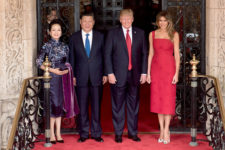 The US stock market is in a wait and see mode. The US economy continues to grow, but the Federal Reserve is concerned about trade uncertainty and the possibility of global growth slowing. The Federal Reserve is now forecasting a rate cut in 2020. This is a very large shift from Q4 2018 where the Fed had been signaling aggressive rate increases. According to comments made recently by Jerome Powell, he doesn’t think current tariffs are enough to put severe pressure on the US economy. However, President Trump said he plans to put a 25% tariff on an additional $250 B in Chinese goods after trade talks collapsed in May.
The US stock market is in a wait and see mode. The US economy continues to grow, but the Federal Reserve is concerned about trade uncertainty and the possibility of global growth slowing. The Federal Reserve is now forecasting a rate cut in 2020. This is a very large shift from Q4 2018 where the Fed had been signaling aggressive rate increases. According to comments made recently by Jerome Powell, he doesn’t think current tariffs are enough to put severe pressure on the US economy. However, President Trump said he plans to put a 25% tariff on an additional $250 B in Chinese goods after trade talks collapsed in May.
Today, the Wall Street Journal reported that Xi will present conditions for renewing the trade talks to President Trump at the G20 Summit this weekend in Osaka, Japan. Specifically, Xi would like the US to drop it’s ban on technology sales to Chinese telecom giant, Huawei. Also, all punitive tariffs must be dropped. Expectations for the meeting have been very low. On Wednesday, via a phone interview with Maria Bartiromo of Fox News, President Trump said the tariffs have helped the US in many ways. The President argues that the tariffs are hurting the Chinese economy and that, ‘they want to make a deal far more than I do’. I note these comments because they suggest that the President is setting a very low expectation for a deal. This is in marked contrast to the positive comments he had been making earlier this year.
According to S&P Dow Jones, earnings growth in the US is forecasted at 8.5% for 2019. If things remain as they are, I think we are more likely to see something like 5%, given typical analysts inflated earnings. The S&P 500 is trading at 16.5x forward earnings. The number has ranges from about 13.5x to 19x over the past year. If trade tensions get worse and additional tariffs are put into place, there is increased risk that the economy could slow. This would not be good for either the equity market or President Trumps chance at a re-election. At the same time, there appears to be growing political pressure on Xi to keep a firm stance with the US.
On the other hand, let’s say the US and China agree to put the trade talks back on track at the G20. If that includes delaying additional sanctions, we could see continued positive returns in US equities. However, given the demands the Chinese are expected to make, I think the chances are about one in three. In particular, Trump has been taking a very hard line on intellectual property. I think it is unlikely the US will concede on lifting the Huawei ban. According to the New York Times, the US added five additional companies to the sales ban, citing national security interests. Just as the US sees intellectual property as a national security interest, the Chinese may see the bans as a severe blow to their security interests. The stakes for a deal seem to be growing day by day. For this reason, I think the chances of a short-term settlement are quite slim.